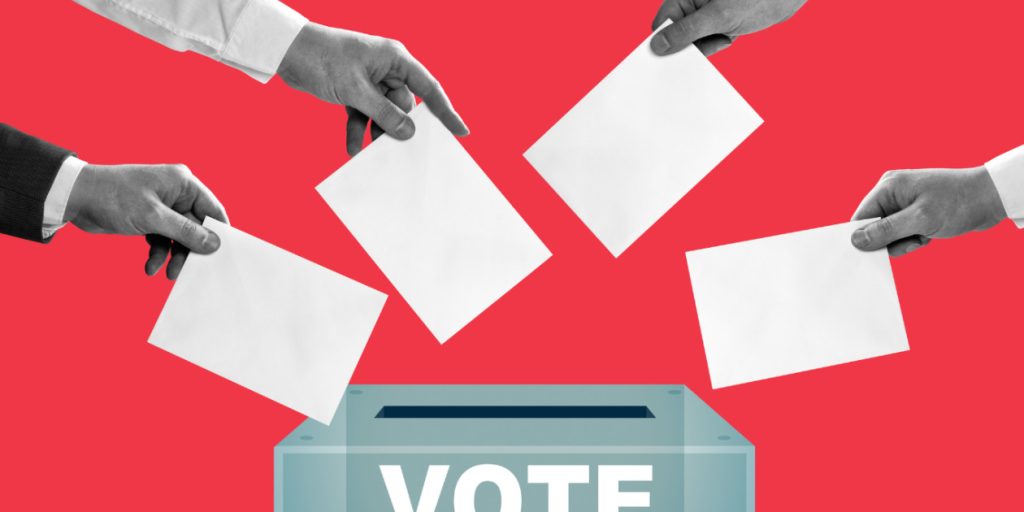
Understanding the Concept of Election Cycles and Legislative Priorities
Election cycles have a significant influence on how legislative priorities are set within a country, as they often lead to shifts in political agendas that directly shape policies and programs. With each cycle, lawmakers assess the needs of their constituents, and these issues become the foundation for creating laws and regulations. Understanding this relationship is essential for political players and citizens who want to grasp how laws are formed.
Studying election cycles and legislative priorities allows for a deeper analysis of how the political climate affects the lawmaking process. By identifying election patterns, lawmakers can determine when to focus on social and economic issues. This knowledge benefits not only politicians but also business owners and ordinary citizens invested in national development.
By combining data and insights about election cycles, legislators become more open to the possibilities of reform. Ongoing studies on the dynamics between elections and legislative priorities serve as a foundation for better governance and more effective lawmaking. This process emphasizes the importance of transparency and public participation in the governmental system.
The Role of Elections in Setting Laws
Elections provide a natural point for reviewing and reshaping legislative priorities, as campaigns highlight the pressing issues faced by the nation and its people. Candidates typically present platforms based on current societal needs, which guide their legislative decisions if they are elected.
The election process serves as a mechanism for power shifts, allowing new leaders to bring fresh perspectives and priorities to the legislature. For instance, major economic or health issues often take center stage during campaigns and are then translated into new legislation. This shift shows how politics and lawmaking are interconnected.
The connection between elections and legislative development reflects the dynamic nature of governance. Through the regular transitions brought by elections, policies are updated to respond to the demands of the times. This process enables more responsive governance and adaptation to a changing social context.
Factors Influencing Legislative Priorities
Various factors influence the shaping of legislative priorities, including the political climate, economic conditions, and public opinion. These issues frequently change depending on national circumstances and global events, making it important for lawmakers to remain flexible. They must be attuned to these shifts to serve their constituents effectively.
Analyzing the current state of society provides a foundation for creating new policies. For example, during economic or health crises, legislative priorities are swiftly adjusted to lessen the impact on citizens. These decisions are directly informed by observations and data from various sectors.
Thus, shaping legislative priorities is not merely a technical task but a way of engaging with the people. Gathering and analyzing public opinion ensures that enacted laws genuinely address the needs of society. Transparency and citizen participation are crucial components of this process.
Public Connection to the Legislative Agenda
Public opinion plays a major role in the development of legislative priorities, as lawmakers aim to serve their constituents. Giving attention to the concerns and needs of the people results in more meaningful laws that prioritize the welfare of the majority. In this way, the voices of citizens become a vital part of the legislative process.
The interaction between the public and lawmakers reinforces transparency and accountability in government. When public opinion is clearly expressed through campaigns and discourse, it becomes easier for lawmakers to create laws that are relevant to the current situation. This process embodies the essence of representation and participation.
In many cases, changes in the legislative agenda come directly from in-depth studies of societal issues. Engaging with communities, conducting surveys, and organizing town hall meetings are just some of the ways public opinion is incorporated into policy-making. This relationship enables more effective governance and reform.
The Impact of Election Cycles on Legislative Agendas
Election cycles directly affect how legislative priorities are set due to shifts in power and the arrival of new leaders in the legislature. In every cycle, candidates propose platforms that respond to current issues, resulting in changes in focus when it comes to lawmaking. New leaders often bring fresh perspectives and updated priorities upon taking office.
Election cycles also serve as an evaluation period for incumbents. Their performance is scrutinized by the public, and this feedback influences the recalibration of legislative agendas. When many legislators are up for re-election, the pressure increases to pass laws that align with public opinion.
The influence of election cycles isn’t limited to changing priorities—it also affects how laws are made. Lawmakers become more responsive to high-impact issues that could influence their re-election prospects, leading to quicker and sometimes more controversial decisions. This dynamic reveals how politics and lawmaking are tightly interwoven.
Political Pressures and Legislative Priorities
The political environment, shaped by election cycles, exerts significant pressure on legislators to shift their focus. Often, this pressure pushes lawmakers to address urgent matters that resonate with the public, ensuring their actions remain in line with constituent sentiment. This responsiveness is essential for sustaining public trust.
During election seasons, political discourse intensifies, and attention gravitates toward vote-swaying issues. Lawmakers may prioritize legislation that offers fast results or appeals to emotional concerns, occasionally at the expense of long-term planning. This environment makes legislative priorities highly adaptable but also occasionally unstable.
This pressure is evident in the kinds of laws introduced and passed. While it can yield immediate benefits for the public, it also presents a challenge: balancing short-term gains with sustainable policy goals. Understanding this tension is essential for grasping how election cycles mold legislative behavior.
Balancing Short-Term Gains and Long-Term Goals
One of the greatest challenges for legislators is finding the balance between addressing immediate needs and laying down long-term reforms. Election cycles often amplify the demand for short-term solutions that can be quickly implemented, even though they may not provide lasting results.
Lawmakers must weigh the benefits of rapid relief measures, such as economic aid packages, against foundational policies like educational reform or infrastructure projects that require more time. The tendency to prioritize short-term gains during election periods can delay long-term national development.
However, successful policymakers find ways to blend both priorities. They craft laws that provide immediate help while setting the stage for long-term progress. This approach ensures continuity, resilience, and broader public trust.
The Impact of Public Opinion
Public opinion greatly shapes legislative agendas during election cycles. Lawmakers, sensitive to voter feedback, are inclined to propose policies that reflect public concerns. Voter sentiment becomes a powerful influence in determining the direction of lawmaking.
This influence is visible in how politicians frame debates and public messaging. Issues like healthcare, education, and economic growth often dominate discussions because they resonate with voters. Responding to these concerns helps keep legislative actions relevant and responsive.
Public engagement through surveys, town halls, and social media also provides lawmakers with real-time insights. By listening to these voices, legislators can tailor policies that address the actual needs of the population, making governance more efficient and participatory.
Collaborative Governance in Legislative Processes
Legislation is rarely a solitary effort—it often involves collaboration between lawmakers, parties, civil society, and the public. During election cycles, this collaborative spirit becomes even more critical, as building coalitions and public support can determine the success of a proposed law.
Public consultations and stakeholder forums are common strategies for gathering diverse perspectives. These inclusive discussions help ensure that laws are not only effective but also broadly accepted, increasing the chances of smooth implementation.
This cooperation also helps lawmakers balance political pressure with thoughtful policy development. Open dialogue between sectors ensures that legislation is rooted in real needs and shared goals.
Technological Tools in Shaping Legislative Agendas
Modern technology is transforming how legislative priorities are determined during election cycles. With tools like data analytics, sentiment analysis, and predictive modeling, lawmakers can quickly assess voter concerns and emerging issues.
These technologies help legislators stay ahead of trends, enabling them to propose timely and relevant solutions. For example, tracking social media conversations or polling data can reveal which topics are gaining momentum and deserve legislative attention.
Additionally, digital tools enhance transparency and accelerate communication between the public and elected officials. This digital transformation makes the legislative process more efficient and reflective of real-time public sentiment.
Navigating Political Dynamics and Interests
Political dynamics and vested interests significantly affect how legislative priorities are set during election seasons. Lawmakers must balance public demands with lobbying pressures, partisan strategies, and institutional constraints.
As political competition intensifies, lawmakers may focus on high-visibility legislation to appeal to voters, even if it means compromising on long-term policy consistency. Skilled legislators navigate this tension by forging alliances and making pragmatic choices that still align with core values.
Understanding these complex dynamics is crucial to interpreting how and why certain laws are prioritized over others during an election cycle.
The Influence of Media and Public Discourse
The media has a powerful role in steering legislative focus during election cycles. By spotlighting key issues and shaping public narratives, the media helps define what lawmakers view as top priorities.
Media coverage often pressures politicians to act on widely discussed concerns. As topics trend in news cycles and online platforms, lawmakers feel compelled to respond legislatively to maintain relevance and public favor.
This media-public feedback loop makes legislative processes more dynamic but also more reactive. When managed well, it allows lawmakers to remain aligned with evolving societal values.
Strategic Adjustments During Election Cycles
Election cycles demand constant recalibration of legislative strategies. Lawmakers adjust their agendas in response to shifting public sentiment, economic developments, and campaign pressures.
This period serves as a checkpoint where legislators reassess existing laws and consider adjustments to remain responsive. If new issues emerge—such as climate change or global inflation—legislators must pivot accordingly.
The ability to evolve while maintaining legislative integrity is a hallmark of effective governance. This adaptability ensures that the government remains resilient through electoral transitions.
Humble Progressive Policymaking
The intricate relationship between election cycles and legislative priorities highlights the dynamic, responsive nature of democratic governance. Every cycle serves as both a mirror and a catalyst—reflecting public sentiment while prompting systemic change.
Policymaking in this context must be both agile and forward-looking. It requires listening to the people, adjusting strategies, and envisioning long-term solutions that transcend electoral timelines. Embracing this continuous process creates a resilient and inclusive political environment.
At its heart, the link between election cycles and legislative priorities is a reminder that democracy thrives not through static laws, but through living dialogue—between leaders and the public, between tradition and innovation, and between today’s needs and tomorrow’s vision.


